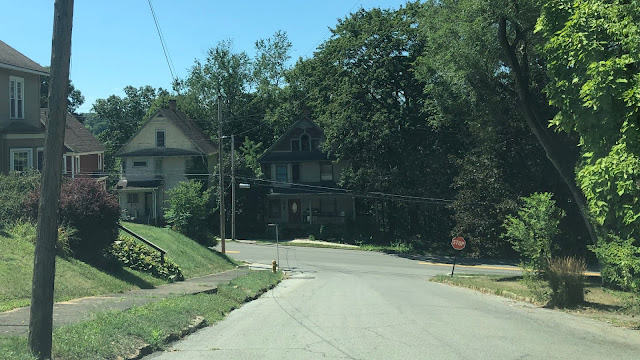Long ago, when we first moved back to the Pittsburgh area, I spent a lot of time looking for nearby places to hike. I've since learned that you need to travel at least an hour and a half to get to anyplace really good, but that's another story altogether. My quest led me to State Game Lands 245, near the ultra-Trump-loving village of Claysville, Washington County. I returned there today to clean and fire my grandfather's old shotgun, which had not been fired in at least 40 years.
For years I've been meaning to bring the old gun down here and see if it still works. I nervously took it to the gun shop in Bridgeville to see what they might say. The creepy militiaman behind the counter said they don't deal in shotguns, only high-powered weaponry. That place was full of old taxidermied baboons and ostriches. It had Trump paraphernalia about and sold "blue lives" flags. From there I went to the gun shop on Thoms Run Road, which seemed much more like the kind of place where hunters shop--as opposed to the kind of place where angry rednecks go to stock up on killing machines. The helpful fellow there showed me how to clean the shotgun, told me what kind of ammo to use, and sold me everything I needed.
Then? Then I took it to the game lands where they have a shooting range. I put an old plastic bottle in a tree, and I fearfully loaded up the thing and shot it. What a beautiful noise! After that, I thought I'd make a quick trip down to the area of WEST VIRGINIA that I've been exploring of late.


















































